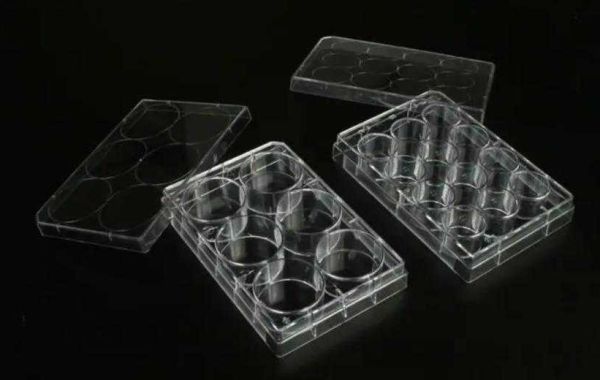Here are the key factors to consider when choosing a cell culture plate:
- The type of cells you are growing:Different cell types have specific requirements for attachment and growth. Consider if your cells need a treated surface for adhesion. Common treatments include tissue culture treatment (TCP) for standard adherent cells and extracellular matrix (ECM) coatings like collagen or fibronectin for specific cell types. Untreated plates are available for suspension cultures.
- The number of cells you need to grow:Choose a plate size with the right number of wells to accommodate your experiment and cell needs. Common sizes range from 6-well plates for small studies to 96-well plates for high-throughput experiments.
- The experiment you are performing:Certain assays may require specialized plates with features like optical bottoms for microscopy or ultra-low attachment surfaces for studying cell suspension.
- Gas exchange and sterility:Vented lids allow for gas exchange (oxygen and CO2) crucial for cell health. Choose vented or non-vented based on your cell type's needs. Plates are typically sterile and ready to use. Consider options like sterile filters in the lid for specific experiments requiring an aseptic technique.
- Budget and Compatibility: Plates are typically polystyrene (PS) for disposable use or polystyrene with a treated surface (TCPS). Glass plates are reusable but require more careful handling and cleaning. Consider cost-effectiveness based on your needs. Ensure the plate format (e.g., well shape, size) is compatible with your pipettes, microscopes, or other equipment used in your workflow.
By considering these factors, you can choose the most suitable cell culture plate for your specific experiment and cell type, optimizing your cell growth and experimental results. I think you are also interested in How Long Can I Store Cell Culture Plates?







